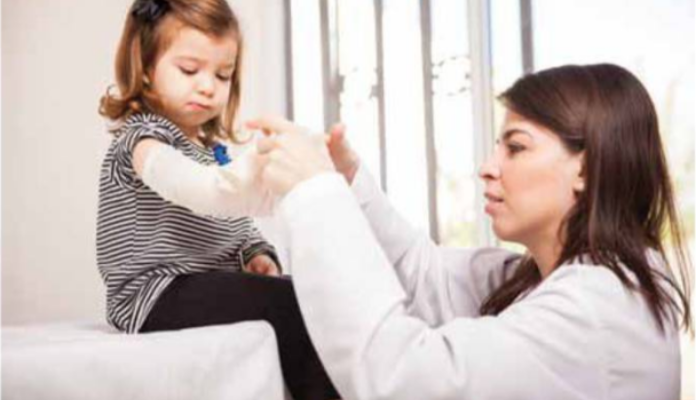Cuts and Braises in Kids
Soft tissue injuries are common in children as they are accident prone and have many falls. They also come in contact with sharp objects, blows etc. which in turn can cut or bruise their sensitive skin, These wounds can be categorized into closed or open wounds. Here we discuss these in detail.
Closed Wounds
An example of a closed wound is a bruise. The characteristic feature in this kind of wound is that the skin surface is not broken. However, there is tissue damage and bleeding below the surface. Sometimes, it can turn serious due to internal bleeding, leading to shock. Also, visible swelling and discolouration is noticed in the area of the wound.
Treatment
- Keep an ice pack wrapped in cloth on the wound to reduce bleeding under the surface for about 20 minutes, on and oft
- If the bruise is on the leg, ensure that the wounded leg is elevated
- Give the child paracetamol or ibuprofen for pain relief
- It the bruise is big, try to limit activity and ensure that the child gets good rest
Open Wounds
The characteristic feature in this kind of wound is that there is a break in the skin surface. Examples for open
wounds are abrasions, lacerations and avulsions.
Cuts Or Lacerations
These injuries are caused when skin comes in contact with sharp objects like knives and glass pieces. The tear can be superficial or deep.
Abrasions
These are scrape injuries and can be very painful due to open nerve endings, it has to be cleaned well to prevent any infection.
Avulsions
This is caused due to complete tearing of the soft tissues and there can be significant bleeding. In worst cases, ¡t may lead to amputation.
Puncture
This wound is caused due to nail/thorn etc. that can easily get embedded under the skin. In this wound the bleeding is less compared to an avulsion. However, you should remember that infections are common in these kinds of wounds.
When Stitching Is Required
- The edges of skin do not approximate
- The wound is greater than 1/2inch length
- The cutis in the face area — stitching will be required to minimize scarring and infections. A plastic surgeon is involved in these situations to avoid scars etc.
Immunization
- Review immunization records especially if the wound is caused due to a rusty nail etc.
- Check when the last tetanus shot was given, If it is given in the last five years, then TT is not necessary.
- Seek medical help if there are any signs of infection for example, fever, swelling, redness, pain, pus etc. Oral antibiotics may be required. An infection can also appear as a tiny red circle around the stitching.
- Use additional dressing if necessary
Basic First Aid
- Wash area and surrounding areas with soap and water
- Apply firm pressure to stop bleeding
- Cover with a dressing either gauze, adhesive tape, bandage etc. in a sterile fashion using disposable gloves
- Apply a topical antibiotic before the dressing to prevent infection
- If sutures are required they must be placed within six hours’ time when there is excessive bleeding. Do not remove the blood soaked bandages or the bleeding will get worse.
When To See A Doctor
- If the cut is deep or gaping
- II bleeding does not stop after 10 minutes of direct pressure
- When there ¡s severe pain
- It there are signs of infection or presence of embedded objects in the wound
- For TT shot when the wound is caused due to dirty/rusty objects
- When the bruise does not fade within a week
- When bruising occurs easily for no apparent reason
It is important that immediate first aid is given to these injuries even though they may appear small, they can turn fatal due to neglect. Teach your kids, the importance of first aid and always advise them about the dangers when using sharp objects like scissors, knives, screw drivers etc. If possible, store such instruments where the kids cannot reach easily. And if they are working with scissors, adult supervision is important. In case of emergency do not delay, but rush to a nearby hospital.
